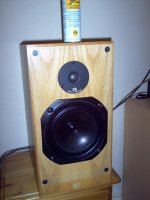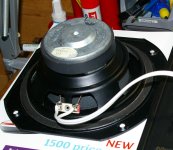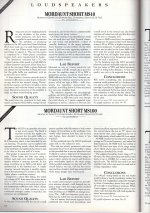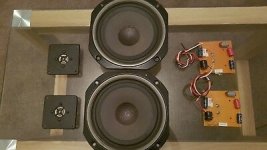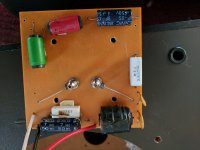Galu, thanks again for the info... May I ask if you have treated the rubber surrounds with silicon oil on these speakers? They seem a little "shiny".
That's just an effect of my camera flash!
The Mordaunt Short PVC surrounds are now about 30 years old and show no signs of deterioration.
There's absolutely no need to treat PVC surrounds with silicone oil, but I have seen this done with older loudspeakers from the 1960s whose rubber surrounds have hardened.
The Mordaunt Short PVC surrounds are now about 30 years old and show no signs of deterioration.
There's absolutely no need to treat PVC surrounds with silicone oil, but I have seen this done with older loudspeakers from the 1960s whose rubber surrounds have hardened.
I treated my ancient MA R300/MD speakers with silicone grease, the image at the bottom.
Beware that aerosol silicone grease has a potent solvent which might attack the glues. I sprayed it onto a tissue, let the solvent evaporate and then worked it in.
TBH, heatsink clear silicone grease is probably safer. No solvent.
These were a superb buy for £60. I just had to replace the ferrofluid in the SEAS 19TAF/G tweeters. And do the crossover.
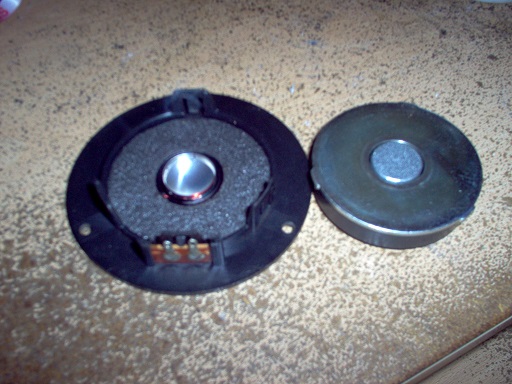
Not much wrong with that KEF or BBC-style negative polarity Butterworth, IMO.
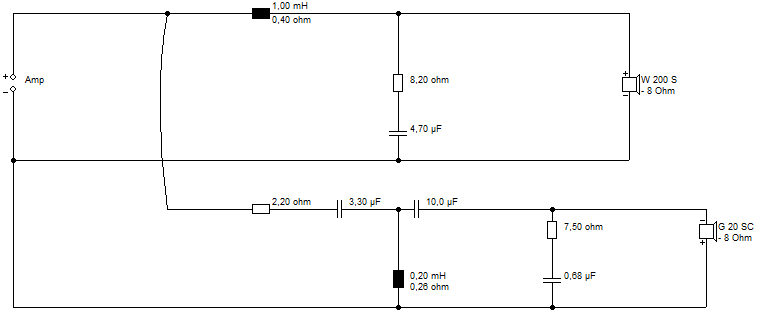
Only works with 8" bass though. It's because the time-alignment is half a wavelength out at 3kHz. So phase mostly lines up.
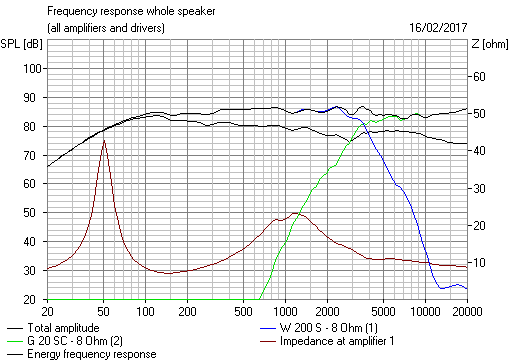
And where it doesn't, it goes 90 degrees and improves the inevitable hole in the power response at 3kHz crossover:
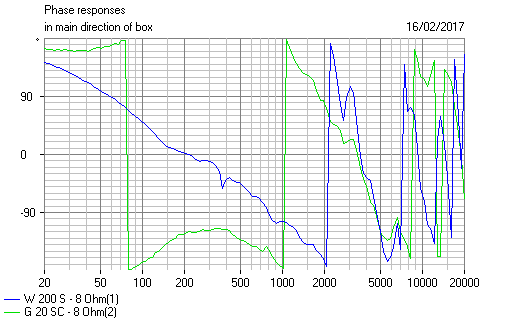
Phase aligned LR4 sounds thin by comparison. I can never decide which I prefer.
Beware that aerosol silicone grease has a potent solvent which might attack the glues. I sprayed it onto a tissue, let the solvent evaporate and then worked it in.
TBH, heatsink clear silicone grease is probably safer. No solvent.
These were a superb buy for £60. I just had to replace the ferrofluid in the SEAS 19TAF/G tweeters. And do the crossover.
Not much wrong with that KEF or BBC-style negative polarity Butterworth, IMO.
Only works with 8" bass though. It's because the time-alignment is half a wavelength out at 3kHz. So phase mostly lines up.
And where it doesn't, it goes 90 degrees and improves the inevitable hole in the power response at 3kHz crossover:
Phase aligned LR4 sounds thin by comparison. I can never decide which I prefer.
Attachments
Steve, here's a link to photos of the Elac 180JM23 mid/bass driver as used in the JPW Sonata.
eBay
I've also attached a photo of the rear of my Mordaunt Short MSB165 (180NS10) driver for comparison purposes.
The two 'makes' of drivers look very alike when seen from behind.
Yet Mordaunt Short claimed to have made their own drivers! 😕
eBay
I've also attached a photo of the rear of my Mordaunt Short MSB165 (180NS10) driver for comparison purposes.
The two 'makes' of drivers look very alike when seen from behind.
Yet Mordaunt Short claimed to have made their own drivers! 😕
Attachments
The Willy's HiFi 5" drivers quote Qts 0.41 and Vas 29.5L, but I think they have a smaller magnet than ours. Which means ours are even more reflex suitable.
Resonance: 50hz
Sensitivity: 89db 1w@1M
Impedance: 6 ohms
Power: 60 watts nominal
Frequency range: 46-6000 hz
Qms: 1.48
Qes: 0.57
Qts: 0.41
Vas: 29.5 litres
I like Elac stuff. Very detailed sound and efficient. Small 1" voicecoils and rubber dustcaps. Which is a recipe for a fullranger.
The 8" version was popular too with KEF and my Moniitor Audio, and used in reflex occasionially.
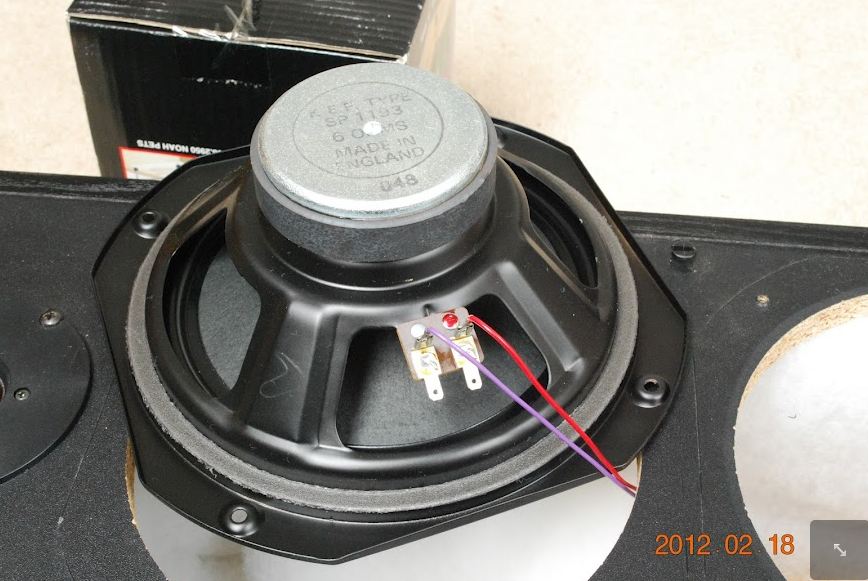
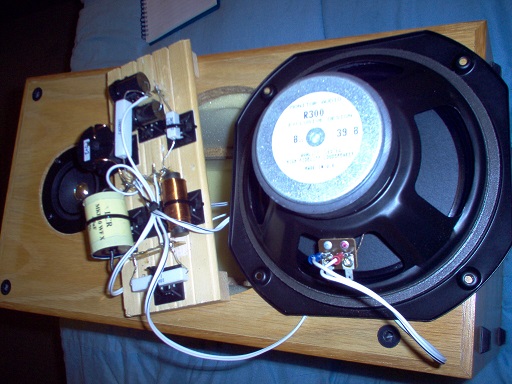
I won't be throwing those 180s away. I know what to do with them.
Resonance: 50hz
Sensitivity: 89db 1w@1M
Impedance: 6 ohms
Power: 60 watts nominal
Frequency range: 46-6000 hz
Qms: 1.48
Qes: 0.57
Qts: 0.41
Vas: 29.5 litres
I like Elac stuff. Very detailed sound and efficient. Small 1" voicecoils and rubber dustcaps. Which is a recipe for a fullranger.
The 8" version was popular too with KEF and my Moniitor Audio, and used in reflex occasionially.
I won't be throwing those 180s away. I know what to do with them.
May I interrupt and ask about speaker damping again? I see some speakers of closed cabinet designs are fully filled with damping material. In which occasions is this necessary?
Loosely fill the enclosure, leaving enough empty space near the baffle board so that the magnet doesn't compact the wadding excessively when the speaker is fitted.
See photo in my post #15
This is the usual way of doing it, but more or less fill may sound better. You have to experiment with the amount until the speaker sounds right to you. There is no strict formula.
See photo in my post #15
This is the usual way of doing it, but more or less fill may sound better. You have to experiment with the amount until the speaker sounds right to you. There is no strict formula.
A speaker which sounds too bright may benefit from adding more wadding.In which occasions is this necessary?
A loudspeaker which sounds dull may benefit from having less wadding.
When you do adjust the amount of wadding if you can get a mono signal, put speakers as near to each other as possible and adjust the wadding of one. It is far easier to compare the 2 speakers with each other, than with how you remember them sounding before you changed things in both.
I tried that in stereo mode, but I didn't hear any difference really. Panning from one channel to another. And I'm talking for a different pair of speakers not the MS30i... Anyway, thank you again for all the answers!
I picked up a used pair of MS 10s today for cheap, I had a pair years ago and loved them.
Problem with one tweeter not working though. FML
Anybody know if either of these tweeters is a direct replacement?
Audax TW010E1 10 mm Polymer Dome Tweeter
Audax TW010F1 10 mm Polymer Dome Tweeter
Based on a few posts here, can I assume exchanging the face plates will keep stock looks?
Cheers.
Problem with one tweeter not working though. FML
Anybody know if either of these tweeters is a direct replacement?
Audax TW010E1 10 mm Polymer Dome Tweeter
Audax TW010F1 10 mm Polymer Dome Tweeter
Based on a few posts here, can I assume exchanging the face plates will keep stock looks?
Cheers.
The photo of the rear of the F1 would suggest the twist and remove from faceplate construction of the MS10 variant.
Probably the only difference between the F1 and E1 is in the shape of their faceplates, but I'd go for the F1 to be sure.
P.S I would replace both tweeters.
Probably the only difference between the F1 and E1 is in the shape of their faceplates, but I'd go for the F1 to be sure.
P.S I would replace both tweeters.
For sure, at that price it makes no sense to do just one.P.S I would replace both tweeters.
Pity the shipping will cost an arm and a leg. 🙁
Don't know where you are based, but here is an alternative supplier:Pity the shipping will cost an arm and a leg. 🙁
https://aarv.fr/epages/6fd3fd94-bf8...-45ad-b25b-6797e8ad6a21/Products/A10.001.0291
Hi, I'm new. I can see this thread is a little stale but you all seem to be the best source of information for this speaker series.
I just got a very good pair of MS10 speakers. They sound great, especially when played next to my existing pair of MS25Ti speakers, which I've enjoyed. The 25s have always been a bit bright in some of the highs, and now the middle is sounding a bit muddy. I'm thinking of improving the 25s.
I've looked at this thread, and others, and the fixes you've done on your speakers. For my MS25Ti project I could change damping for high frequencies, and change capacitors. It's time I got soldering tools! And eliminate the Positec circuit.
The brochure says a 19mm titianium dome tweeter. Should I be trying to tweak this tweeter or replace it? Thanks
I just got a very good pair of MS10 speakers. They sound great, especially when played next to my existing pair of MS25Ti speakers, which I've enjoyed. The 25s have always been a bit bright in some of the highs, and now the middle is sounding a bit muddy. I'm thinking of improving the 25s.
I've looked at this thread, and others, and the fixes you've done on your speakers. For my MS25Ti project I could change damping for high frequencies, and change capacitors. It's time I got soldering tools! And eliminate the Positec circuit.
The brochure says a 19mm titianium dome tweeter. Should I be trying to tweak this tweeter or replace it? Thanks
P.S. It's good news if the 25s are 'a bit bright in the highs'.
At least that tells you the tweeters are working - the treble would be dull if, for instance, ferrofluid had dried up.
P.S. I owned both the MS10 and the MS25Ti and much preferred the sound balance of the MS10. Too much muddy/boomy bass from the 25s in the small listening room I had back then!
At least that tells you the tweeters are working - the treble would be dull if, for instance, ferrofluid had dried up.
P.S. I owned both the MS10 and the MS25Ti and much preferred the sound balance of the MS10. Too much muddy/boomy bass from the 25s in the small listening room I had back then!
Galu, thanks so much for replying. Yeah, I'll do the grunt work before I replace cones.
P.S. Thanks for the fluid comment, I have wondered about the mysterious state of it. And it's cool to know that I'm hearing something similar from these boxes.
P.P.S. I'll get those soldering tools. Don't hold your breath
P.S. Thanks for the fluid comment, I have wondered about the mysterious state of it. And it's cool to know that I'm hearing something similar from these boxes.
P.P.S. I'll get those soldering tools. Don't hold your breath
- Home
- Loudspeakers
- Multi-Way
- Mordaunt Short MS10
